The 2025 Toyota Camry is, as ever, hard to beat when it comes to practical four-door transportation. This year brings some significant design updates, and all variants now have hybrid power. It’s good-looking, user-friendly, and will probably be reliable. It’s a downright enjoyable car to drive, too, once you get your head around the spread of buttons on the steering wheel.
Americans met the Toyota Camry in the early 1980s. By the ’90s, it had a rep for reliability that made it a default choice for cautious car consumers. The first major leap in looks that you’ll probably remember came with the new-for-’96 body, when the car filled out and got significantly sleeker. The Camry kind of blobfish’ed as it continued to grow with successive revisions, but got a major makeover for 2017 that put it in serious danger of looking cool. This new-for-’25 model is an incremental evolution from there, but you’ll be hard-pressed to find someone complaining about that. If you showed a time-traveling car nut from Marty McFly’s era what the Camry looks like now, their heads would explode.
The Camry’s design got just a little sharper while still staying clear of aggro, adopting the cool, wide, and skinny strip connecting the headlights also seen on the Prius, an association Toyota’s design team should take as a high compliment.

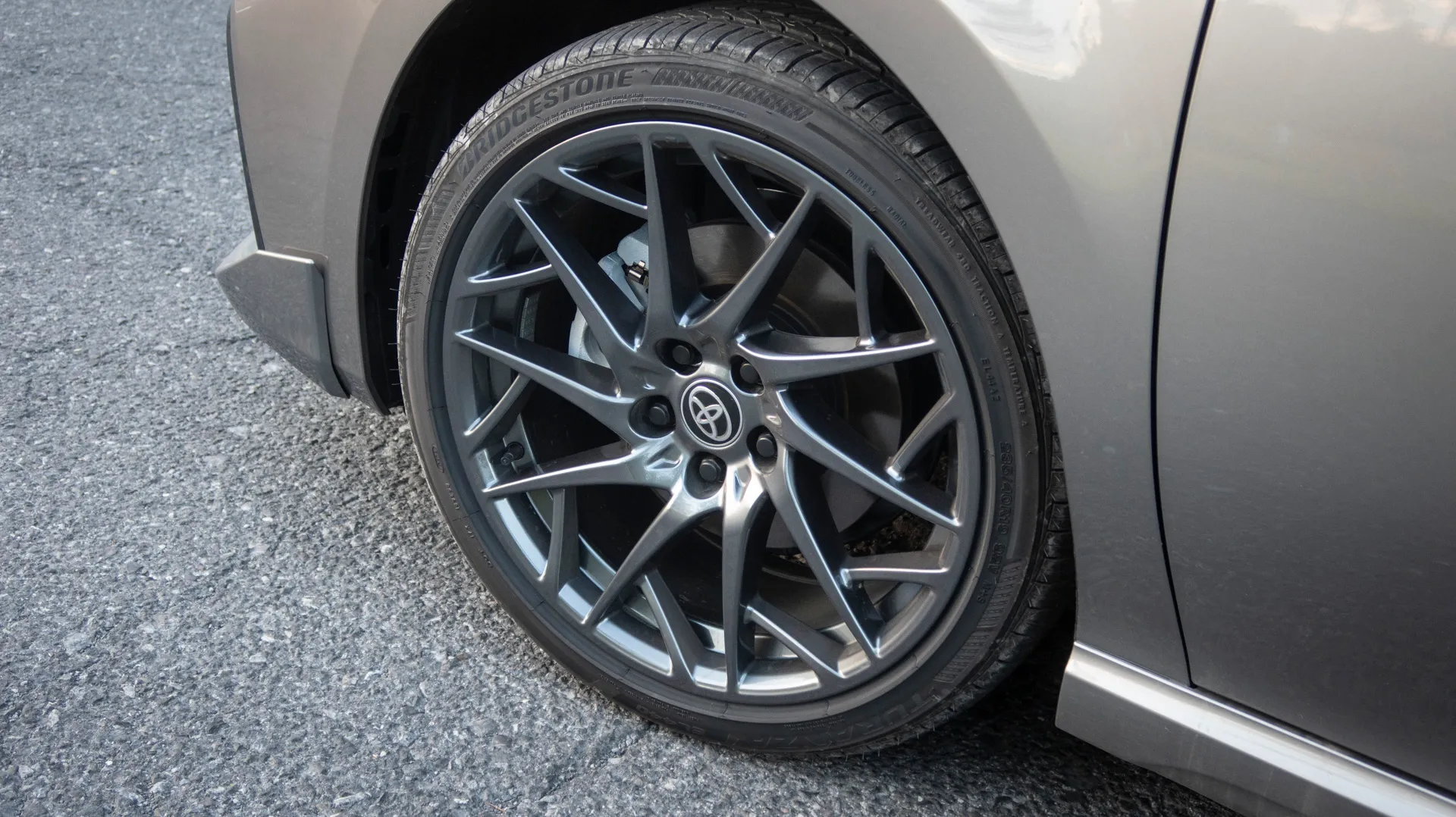



Base Camrys start at just under $30,000. I spent a week with the top XSE trim, built out closer to $44,000, which has (supposedly) slightly stiffer suspension than other versions. It’s very nice to drive, and I kind of miss it already.
The Basics
It’s the midsize sedan archetype, baby. Four doors, five seats, and a big ol’ trunk. Now with a vaguely cheese-gratery chin, dash-integrated infotainment screen, and a hybrid powertrain across all four trims. You can also order it with front- or all-wheel drive, and total output with the gas engine and electric motor is 225 horsepower or 232, respectively. All Camrys are automatic, with CVTs. My all-wheel-drive XSE loaner had a pointless “sequential shift” mode that simulated gears.
The cockpit is a nice place to be. And the center infotainment screen, while quite large, is pretty tidily integrated to the dash and its design. The trunk and back seat are OK—not cramped, but not particularly generous either. A family of four could live with one of these but having a pet would make things a little tougher.



The XSE seats up front, however, are super comfortable. Taut, supportive, just enough give and bolstering without pinching—like a really nice office chair. I could have crossed the country in this car at the drop of a hat. Driving to your office or inlaws will be no sweat.
Driving the Toyota Camry
The Camry is more than competent in everyday driving—it’s genuinely enjoyable. Steering feedback feels good and gives you a great sense of control. Acceleration is perfectly acceptable, and the brakes are brilliantly responsive without being unsettlingly aggressive. Simply put, it feels smooth and clean. Granted, we’re talking about socially acceptable town and country-pace driving here. If you wanted to go hard-charging up Angeles Crest, my guess is that the chassis and suspension would be up for it but the tires would quickly lose patience and I wouldn’t count on the powertrain to let you keep up with any sports cars.

But speaking of emulating more elite vehicles, as a luxury sedan, the Camry is actually pretty darn decent. Again, it’s the ride quality that shines—the XSE model does a great job communicating both comfort and control. It’s not dazzlingly plush, but you can cross train tracks without spilling your coffee. Road noise is what keeps it from feeling like a Lexus. It’s not bad, it’s just not luxury car-level quiet.
One area where the new Camry does feel pretty luxe is the combustion/electric transition. I mentioned that all Camrys are hybrids now, and in normal driving, it’s hard to tell when propulsion changes between gas and electric. If you’re not thinking about it or watching the powertrain gauges, it’s quite seamless.
Speaking of gauges, the XSE’s vast array of screens was not my favorite. If you buy one of these, don’t be too proud to crack open the owner’s manual and really read through the glossary of dash symbols and text abbreviations—there’s a lot more going on than fuel level and speed. Too much, in my opinion. The steering wheel buttons take some time to learn. Except for when you change drive modes, when the entire cluster changes to a picture of your car for a full seven seconds (I counted because it seems, and is, pretty dumb).
The Highs and Lows
Ride quality and drivetrain smoothness were the new Camry’s big standouts for me. It just feels good and smooth everywhere. Styling, inside and out, are also strong points.

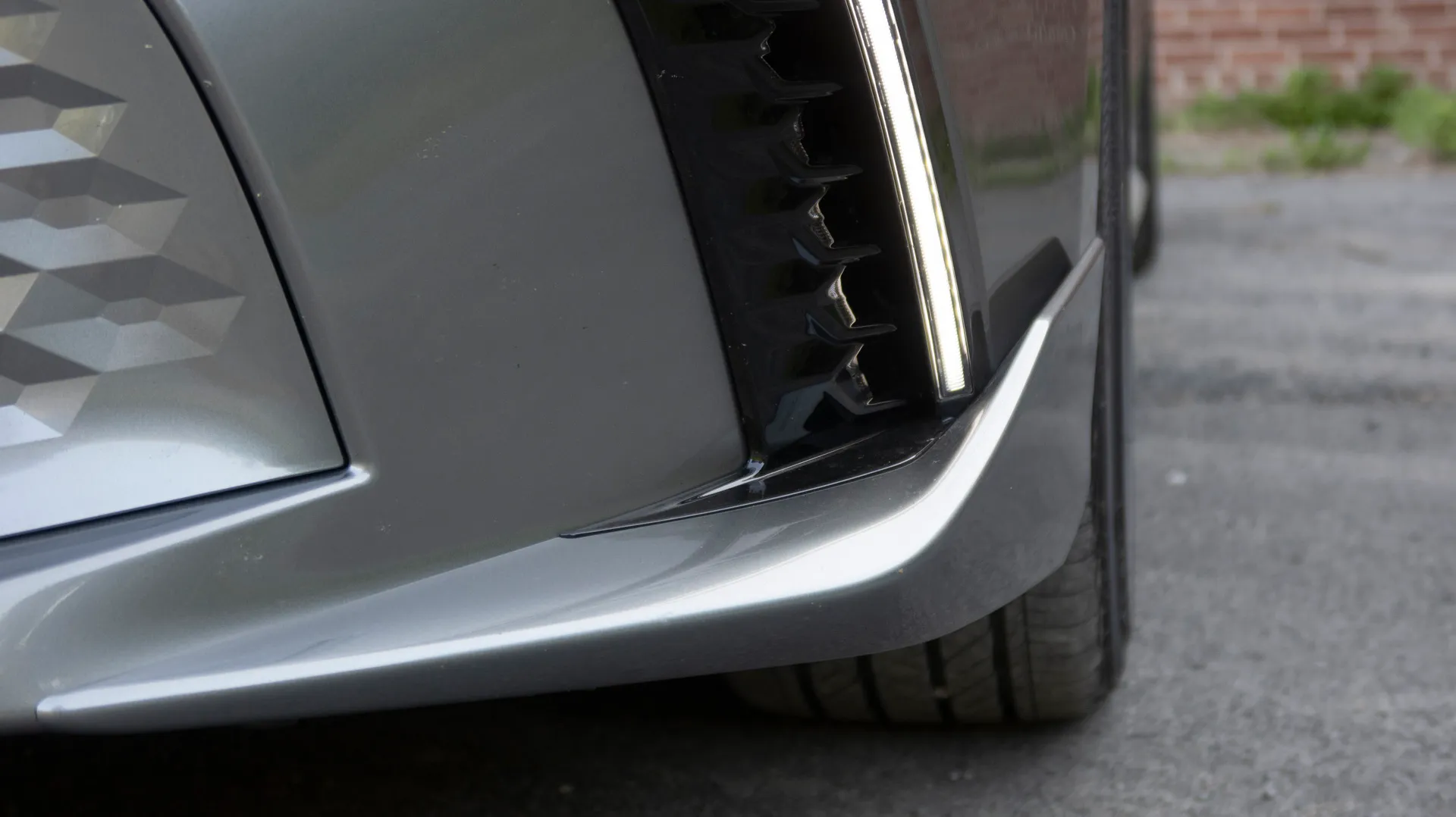



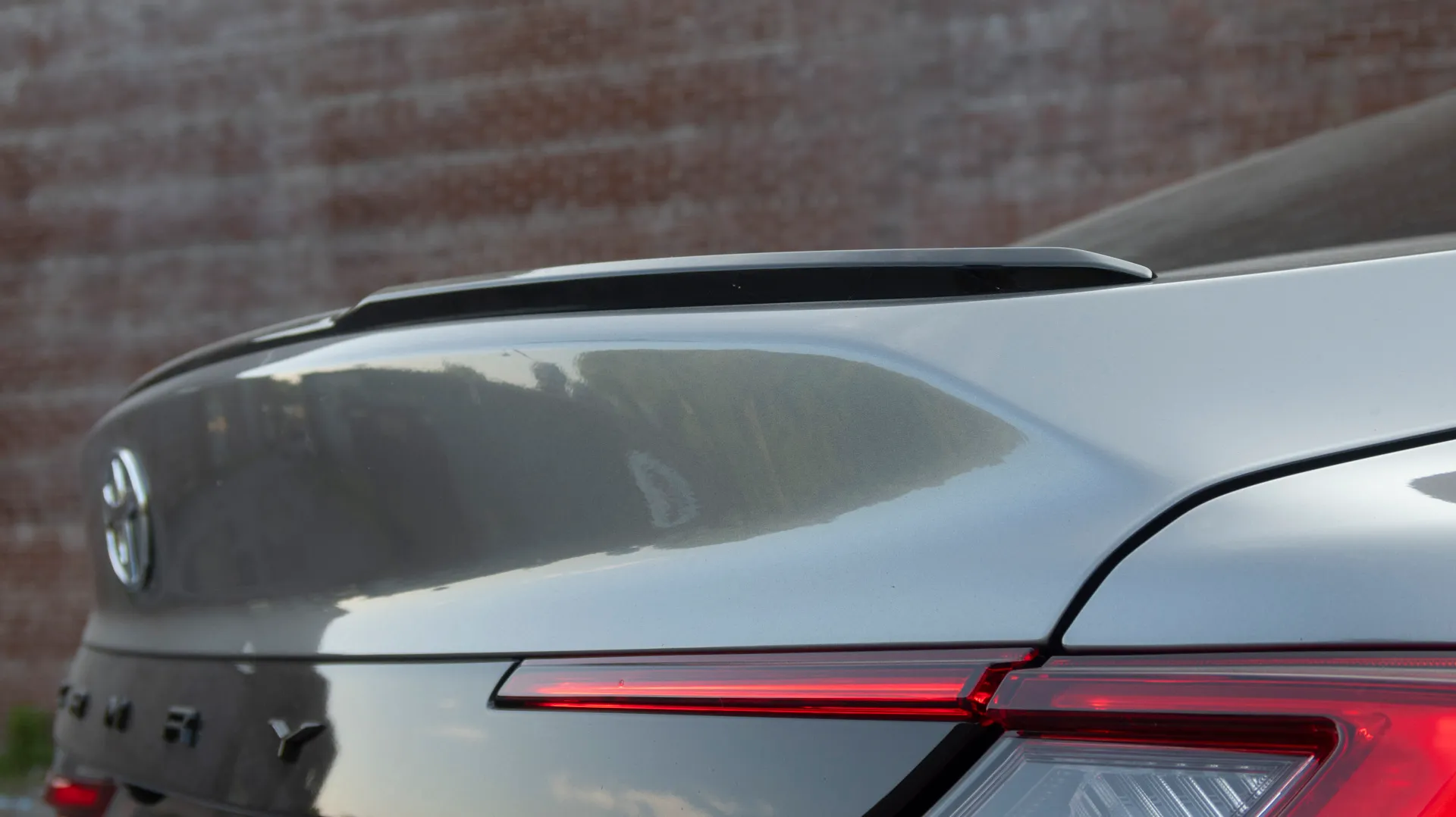
My complaints aren’t necessarily dealbreakers; owners will be able to learn the display setup with some practice and maybe some flashcards of what Toyota’s three-letter symbols mean (What the heck is LTA? It’s “lane tracing assistance,” one of many bits of lingo the Camry forces you to learn). One weak spot I will note is that the air conditioning seemed oddly incompetent. Granted, I had this car on loan during a very hot week in New York (90 degrees ambient) but the Camry’s A/C did not feel up to the task of cooling the cabin. That might have something to do with the huge glass roof, but I think the vent placement is also suboptimal. I found it hard to get the air blowing where I needed it to cool off.
Toyota Camry Features, Options, and Competition
At $29,495 to start, all 2025 Camrys get blind-spot warnings and rear cross-traffic alerts as standard, which are great safety features. Wireless Android Auto and Apple CarPlay are also standard, which is nice. Then you get wireless phone charging (which rarely works in any car) and dual-zone climate control.
There are four trim levels, but the most appreciable differences are between the LE/SE basic models and fancier XLE/XSE variants. The core design and car underneath are the same, but the three-letter trims have significantly fancier interior materials. More importantly, they give you the option to spend even more money on premium options.


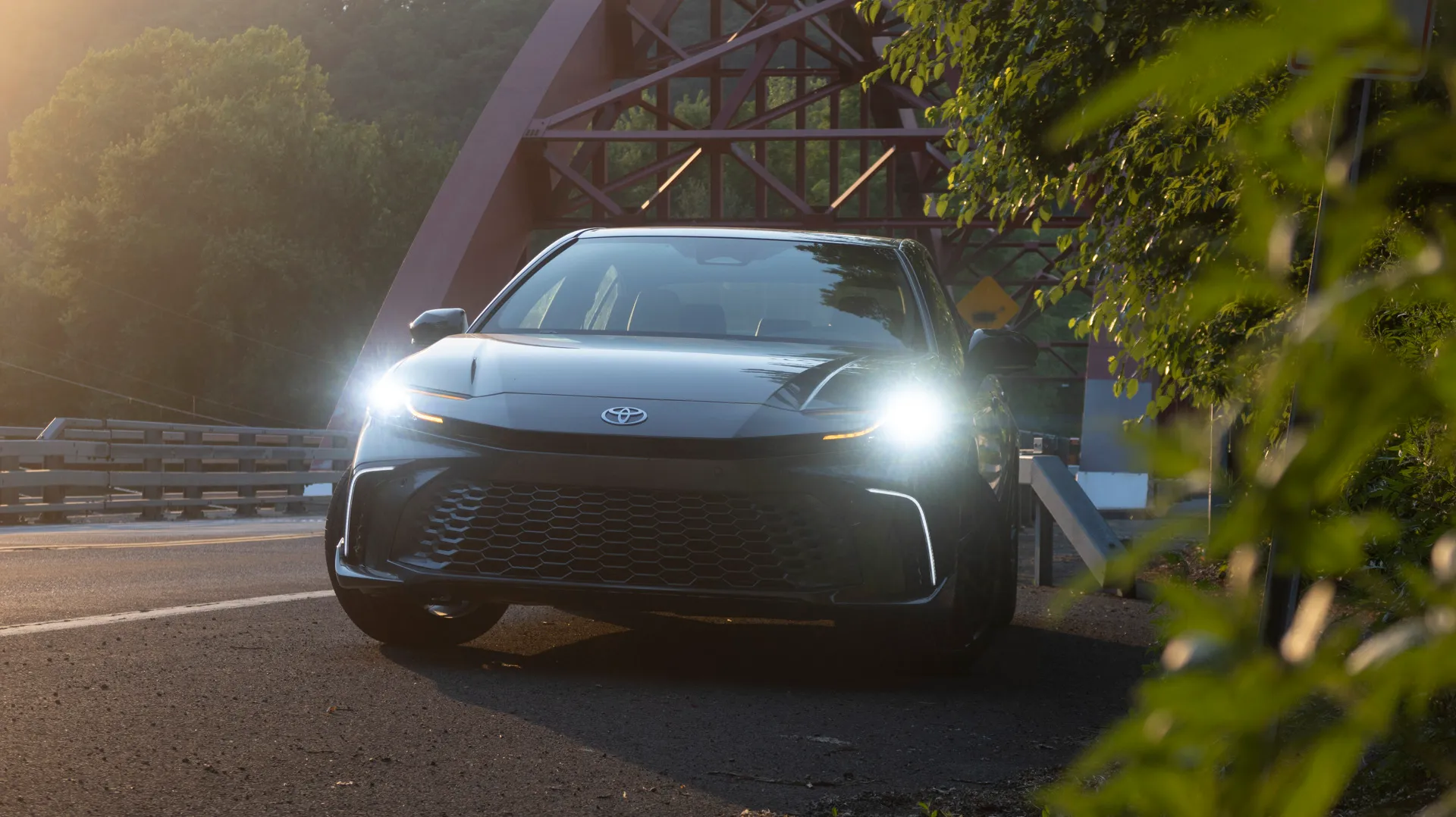
The SE options are pretty much limited to a heated steering wheel and seats, plus a better stereo—all you really need. But the XLE and XSE have Premium and Premium Plus packages that really turn the Camry into the high-tech comfy car I drove for my review. It’s a big step up, though—Premium Plus adds almost $5,000 to the car’s price. You should be able to buy a used Camry for that!
You do, however, get a great stereo and glamorous glass roof, plus front cross-traffic alert, parking assistance with braking, a surround-view camera, reverse automatic emergency braking, and automatic lane change functionality. If you’re willing to pay an additional $15 a month subscription fee for Drive Connect, you can get Traffic Jam Assist which should allow for hands-free driving below 25 mph. The only traffic jams where I live come from getting stuck behind tractors, so I was not able to test this.
I think the best bang for your buck will be in a low-spec car with a few key options; I’d probably be looking at a front-drive SE with the heated seats and steering wheel in a fun color like Supersonic Red. That books out under $34,000 with destination fees. The XSE’s enhanced safety suite is certainly nice, as is that giant pano sunroof, but think hard before you add $10,000 to your order—remember, a free alternative to all that lane-management equipment is just to not thumb through your phone while you’re driving.



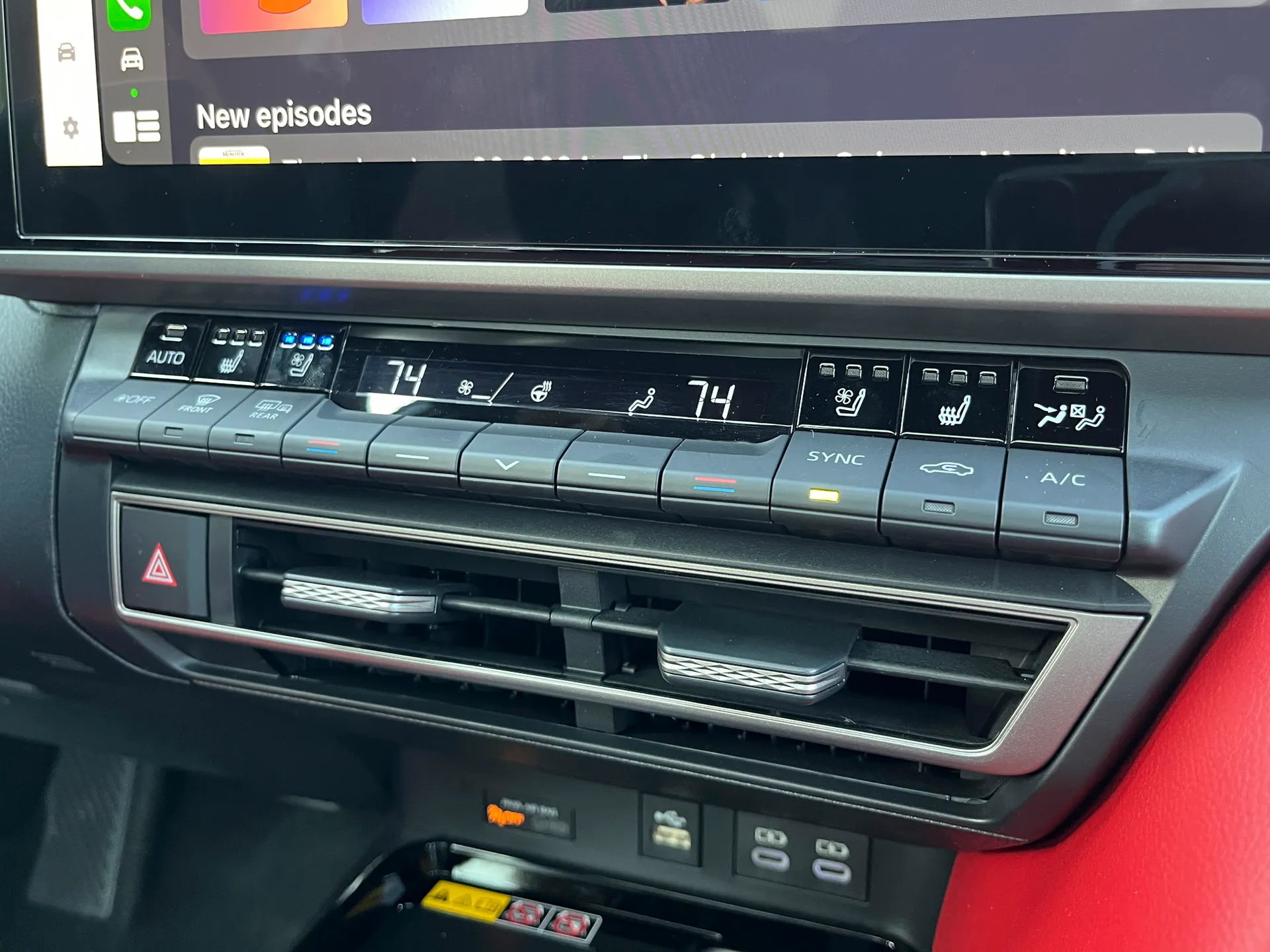


As for competitors, there’s a lot you can do with $30,000 to $40,000. I’d be cross-shopping this against the Honda Accord, Nissan Altima, and Hyundai Sonata. Frankly, all these cars are pretty close on paper. If you’re in the market, it’d be worth taking a day to sit in all three. How much you like the interface and dealership experience is going to go a long way.
Fuel Economy
The 2025 Camry ranges from a 44 combined mpg rating to 51 depending on how it’s spec’d out. The base front-drive LE claims 53 mpg city, 50 highway, and 51 combined. SE and XLE AWD models claim 46 mpg in all driving conditions. The XSE AWD is the thirstiest at 44 mpg combined, 44 city, and 43 highway. I have to admit I’m a little surprised there’s that much of a difference in weight and tuning, but those specs are straight from FuelEconomy.gov.
Your mileage is going to vary a lot depending on how and where you drive. My fuel econ testing was a little too quick-and-dirty to print, but I saw numbers above the claims in gentle cruising.

Not all of Camry’s current rivals are hybrids across the lineup, but the Toyota does quite well on efficiency against the other cars I just mentioned.
Value and Verdict
Like many of you, probably, I was never excited to see or sit in a Camry growing up. They were everywhere, they were all beige, they all had a dent in their bumper below the taillight, and they all smelled kind of funny. It was a car that simply existed. But its reputation for reliability and frugality grew like a snowball rolling down a ski slope, and Toyota kept selling the things.

2017 was a huge year for the Camry—the step-up in styling was so impressive that the car was suddenly on even more people’s radars. The 2025 Toyota Camry’s updates aren’t as dramatic, but they all seem to have been done in the right direction. The car’s basically just a little bit better across the board, and what more could you ask for in a new gen?
| 2025 Toyota Camry Specs | FWD | AWD |
|---|---|---|
| Base Price (XSE AWD as tested) | $29,495 | $31,020 ($44,569) |
| Powertrain | 2.5-liter four-cylinder | 100-kW front hybrid motor | continuously variable transmission | front-wheel drive | 2.5-liter four-cylinder | 100-kW front hybrid motor and 30-kW rear motor | continuously variable transmission | all-wheel drive |
| Horsepower | 225 | 232 |
| Torque | 163 lb-ft (gas) | << |
| Seating Capacity | 5 | << |
| Cargo Volume | 15.1 cubic feet | << |
| Curb Weight | 3,450-3,538 pounds | 3,594-3,682 pounds |
| Ground Clearance | 5.4 inches | << |
| EPA Fuel Economy | 53 mpg city | 50 highway | 51 combined (LE) 48 mpg city | 47 highway | 47 combined (SE, XSE, XLE) | 51 mpg city | 49 highway | 50 combined (LE) 46 mpg city | 46 highway | 46 combined (SE, XLE) 44 mpg city | 43 highway | 44 combined (XSE) |
| Quick Take | Improved in pretty much all areas, the new Camry is a nicely balanced car that’s pleasant to drive anywhere and everywhere. | |
| Score | 9/10 |

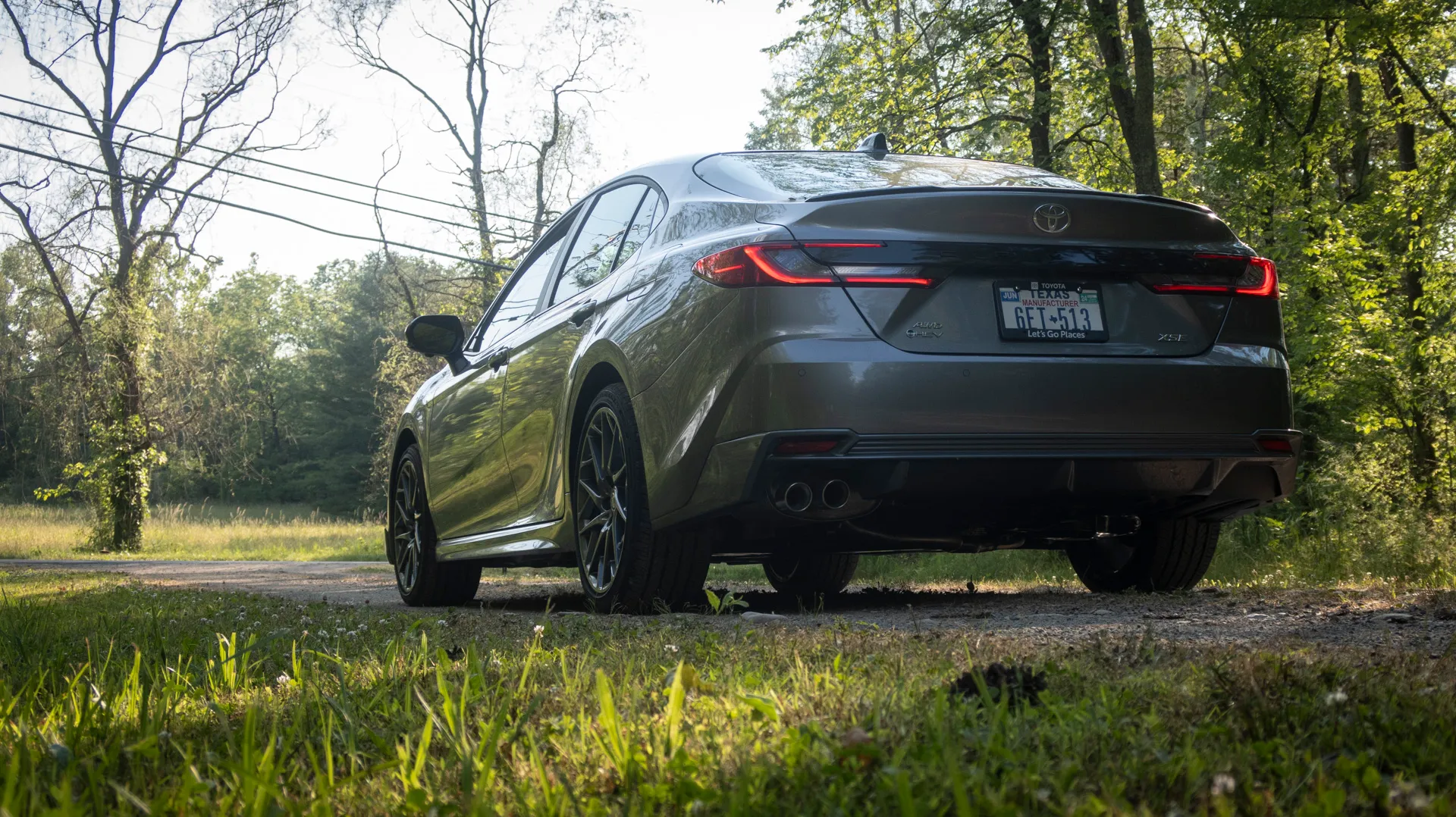











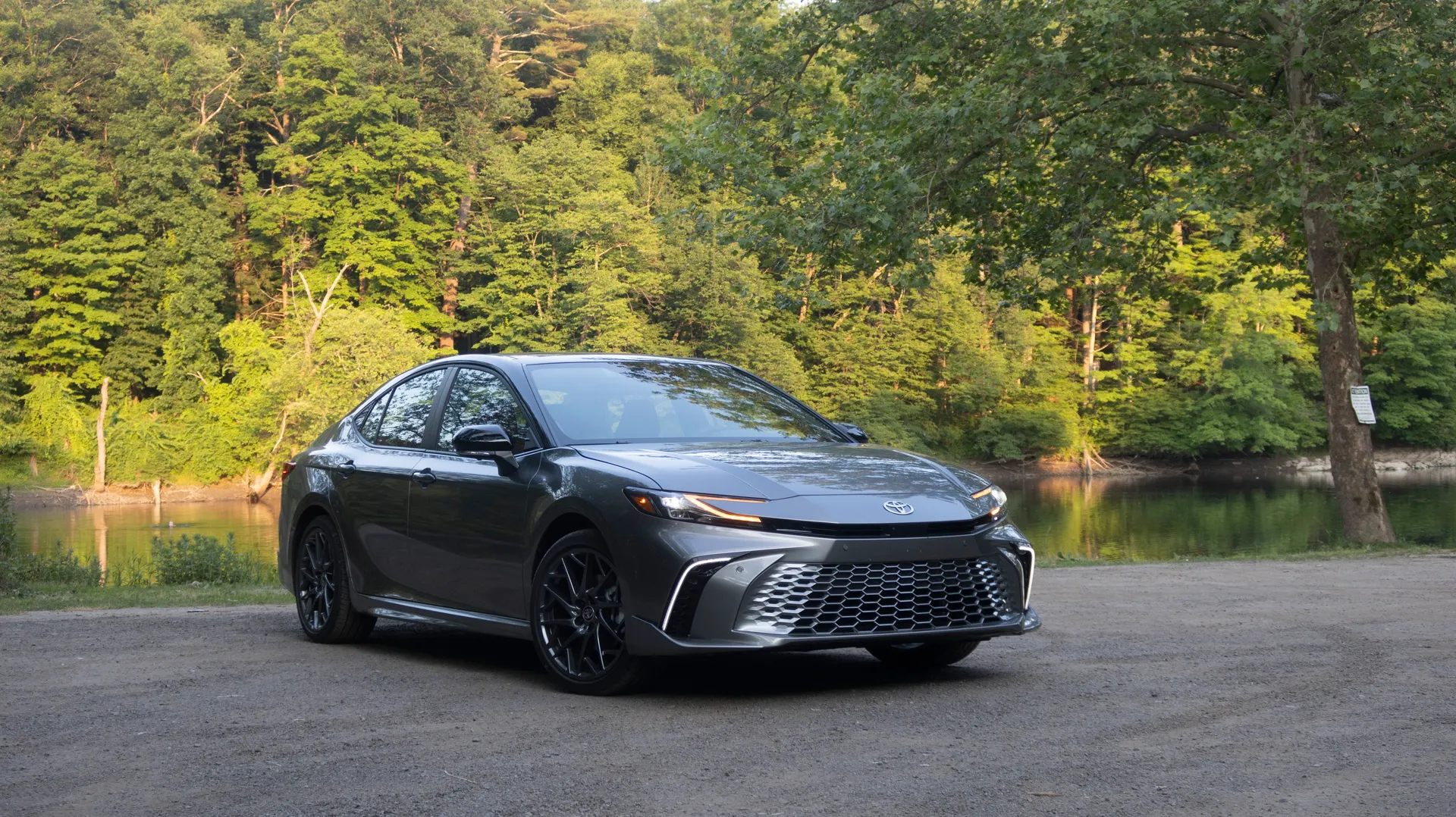









Got a tip or question for the author about the Camry? You can reach them here: andrew.collins@thedrive.com
